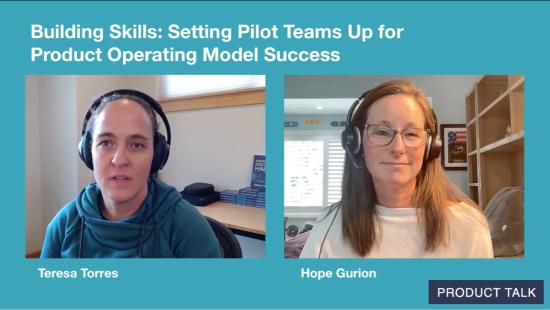Enough hype about AI in health—let’s talk about results
There’s no shortage of big promises about AI in healthcare. The U.S. government announced a $500 billion Stargate initiative to fund AI infrastructure, while the UK government announced £82.6 million in research funding for three projects, two of which are using AI to tackle cancer and Alzheimer’s disease. But ask any patient waiting for a diagnosis, or a clinician searching for certainty, and the real question cuts through all the noise: When will all the innovation deliver real impact where it matters most? We’ve entered an era where healthcare data is measured in exabytes—genomes, images, clinical notes, labs, and signals from every continent. At SOPHiA GENETICS, we’ve just achieved the milestone of analyzing 2 million patient profiles. It’s a number that was unimaginable a decade ago. Yet the value of data isn’t in volume. It’s what you do with it. Insight matters only if it changes an outcome, shortens a diagnostic odyssey, or opens up a new chance for a patient. It’s time to move from conversation to action. Too often, insights get trapped in institutional silos or left in endless pilot projects, just out of reach of the people who need them. 3 ways AI is already transforming medicine Today, technology can connect, for example, a patient in São Paulo with expertise in Seoul, uncovering patterns invisible to the human eye. Here are several ways AI is helping now. 1. Improving diagnostic accuracy: AI algorithms, particularly those based on deep learning, have demonstrated remarkable accuracy in diagnosing diseases from medical images and test results. These systems are trained on vast datasets, allowing them to recognize patterns and anomalies that might be missed by the human eye. For example, in dermatology, AI systems trained on images of skin lesions have shown the ability to detect skin cancers, such as melanoma, with high levels of precision. 2. Enhancing cancer prevention: AI techniques can be used to screen individuals for genomic markers and develop personalized cancer risk prediction scores. This proactive approach can help screen younger patients for genomic predispositions, empowering them to make informed prevention decisions and proactively monitor their health. 3. Tailoring treatments to genomic profiles: One of the most significant applications of AI is in the field of genomics. AI can analyze vast genomic datasets to identify mutations and variations that might influence an individual’s response to certain treatments. For example, our SOPHiA DDM product can identify specific genomic markers that are susceptible to targeted cancer therapies, increasing the efficacy of the treatment and minimizing the risk of adverse reactions, for a more effective and safer treatment plan for patients. To scale up these AI applications there are many regulatory and compliance barriers to overcome. This requires investment in data security, creating clear guidelines, data security measures, and ensuring clinicians are fully trained. Our goal should be to create a regulatory environment that fosters innovation while safeguarding patient data and promoting public trust. We must democratize this powerful data to enable more physicians, practices, and hospitals to incorporate AI into daily clinical use so that a greater number of patients can access data-driven medicine, not just a select few. My message for governments investing in AI is clear: Balance investing in future AI tools with validating existing solutions that have already been proven to improve patient outcomes. Build the bridges that turn breakthroughs into benefits, so that data-driven medicine becomes a reality for every patient. Jurgi Camblong is cofounder and CEO of SOPHiA GENETICS.

There’s no shortage of big promises about AI in healthcare. The U.S. government announced a $500 billion Stargate initiative to fund AI infrastructure, while the UK government announced £82.6 million in research funding for three projects, two of which are using AI to tackle cancer and Alzheimer’s disease.
But ask any patient waiting for a diagnosis, or a clinician searching for certainty, and the real question cuts through all the noise: When will all the innovation deliver real impact where it matters most?
We’ve entered an era where healthcare data is measured in exabytes—genomes, images, clinical notes, labs, and signals from every continent. At SOPHiA GENETICS, we’ve just achieved the milestone of analyzing 2 million patient profiles. It’s a number that was unimaginable a decade ago.
Yet the value of data isn’t in volume. It’s what you do with it. Insight matters only if it changes an outcome, shortens a diagnostic odyssey, or opens up a new chance for a patient.
It’s time to move from conversation to action. Too often, insights get trapped in institutional silos or left in endless pilot projects, just out of reach of the people who need them.
3 ways AI is already transforming medicine
Today, technology can connect, for example, a patient in São Paulo with expertise in Seoul, uncovering patterns invisible to the human eye. Here are several ways AI is helping now.
1. Improving diagnostic accuracy: AI algorithms, particularly those based on deep learning, have demonstrated remarkable accuracy in diagnosing diseases from medical images and test results. These systems are trained on vast datasets, allowing them to recognize patterns and anomalies that might be missed by the human eye. For example, in dermatology, AI systems trained on images of skin lesions have shown the ability to detect skin cancers, such as melanoma, with high levels of precision.
2. Enhancing cancer prevention: AI techniques can be used to screen individuals for genomic markers and develop personalized cancer risk prediction scores. This proactive approach can help screen younger patients for genomic predispositions, empowering them to make informed prevention decisions and proactively monitor their health.
3. Tailoring treatments to genomic profiles: One of the most significant applications of AI is in the field of genomics. AI can analyze vast genomic datasets to identify mutations and variations that might influence an individual’s response to certain treatments. For example, our SOPHiA DDM product can identify specific genomic markers that are susceptible to targeted cancer therapies, increasing the efficacy of the treatment and minimizing the risk of adverse reactions, for a more effective and safer treatment plan for patients.
To scale up these AI applications there are many regulatory and compliance barriers to overcome. This requires investment in data security, creating clear guidelines, data security measures, and ensuring clinicians are fully trained.
Our goal should be to create a regulatory environment that fosters innovation while safeguarding patient data and promoting public trust. We must democratize this powerful data to enable more physicians, practices, and hospitals to incorporate AI into daily clinical use so that a greater number of patients can access data-driven medicine, not just a select few.
My message for governments investing in AI is clear: Balance investing in future AI tools with validating existing solutions that have already been proven to improve patient outcomes. Build the bridges that turn breakthroughs into benefits, so that data-driven medicine becomes a reality for every patient.
Jurgi Camblong is cofounder and CEO of SOPHiA GENETICS.





























































































![[PATREON EXCLUSIVE] The Power of No: How to Say It, Mean It, and Lead with It](https://tpgblog.com/wp-content/uploads/2025/06/just-say-no.jpg?#)
























































